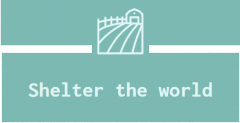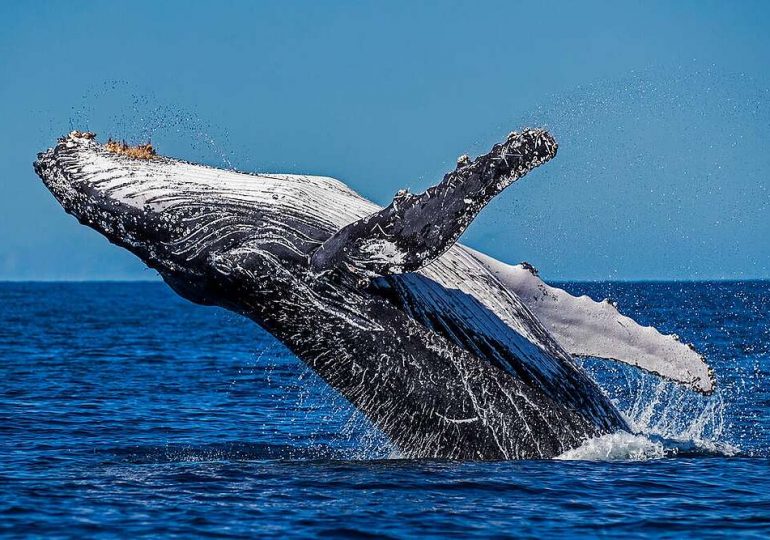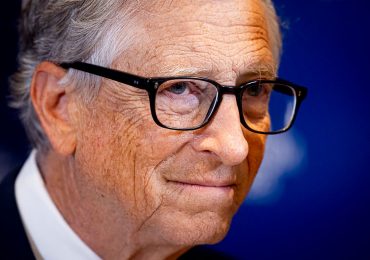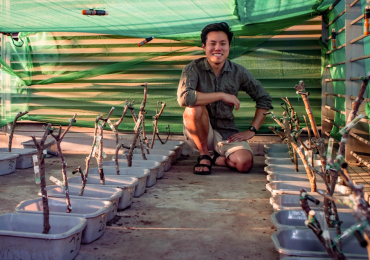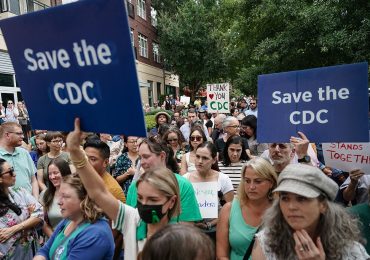Over the years, I’ve seen the difference Greenpeace has made in the world. Not just in the headlines, but in the living, breathing pulse of the planet itself. Every victory, every campaign, becomes part of a much larger story. A legacy carried forward by those who care enough to protect what matters most.
Few stories capture that legacy more powerfully than the return of the humpback whales.
A Humpback whale breaches off a reef in the Southern Great Barrier reef on its Southern Migration, Queensland, Australia. Humpback whales travel huge distances from the warm waters of the great barrier reef on the east coast of Australia to icy waters of the southern Ocean off Antarctic. © Paul Hilton / Greenpeace
Right now, off Australia’s east coast, tens of thousands of humpbacks are making their annual migration south. A magnificent sight that was almost lost forever.
After centuries of slaughter, when industrial whaling drove these gentle giants to the brink of extinction, their ethereal songs nearly fell silent. At one point, estimates suggested there were fewer than 150 individuals.
Today, scientists estimate there are more than 50,000 humpback whales
It’s hard to imagine numbers like that. From the edge of disappearance to abundance again, but it’s a reminder of something Greenpeace has always believed in: when humanity stops destroying, nature heals. It’s the same truth David Attenborough showed us in his latest documentary, that when pressure eases, even coral reefs begin to bloom again. Life, given even the smallest chance, finds a way to recover.
A Humpback Whale (Megaptera novaeangliae) Mother and Calf. The Australian coastline is a migration route for the humpback whale population. Humpback whales undertake a consistent annual migration from high latitude Antarctic feeding grounds to low latitude breeding grounds. © Brooke Pyke / Greenpeace
Greenpeace Australia Pacific’s journey began with whales
This story is deeply personal for Greenpeace. The 1970s “Save the Whales” campaigns were some of our first major victories. A global wave of compassion and action that changed international law, ended commercial whaling in many countries, and redefined what people power could achieve.
Similarly, in Australia, Greenpeace’s journey began with whales. In 1977, a group of activists drove from Sydney to Albany with a couple of inflatable boats in tow, to place themselves between the harpoons and whales. It was a powerful act of courage, one that helped expose the brutality of the whaling industry to the general public and inspired a whole new generation of ocean defenders.
1977 protests outside the last whaling station in Australia in Albany, Western Australia. Photo from the book, The Last Whale. Credit: Jonny Lewis Collection © Jonny Lewis Collection
I’ve seen those whales myself. Vast, dark forms rising and falling through the waves, a mother and calf breaching against the silver water, and I cried. Blown away and deeply awed by the sheer majesty of those creatures.
In that moment, it felt like I was witnessing hope made visible.
Of course, recent reports that humpback whale numbers are now “above pre-whaling levels” need a bit of context. Historical baselines were often incomplete, and counting methods have improved significantly since then. But whether there are even more whales than ever or just simply enough to fill our hearts with awe again, the truth is the same: this recovery is one of the greatest conservation successes of our time.
It is a living testament to what is possible when we refuse to give up. A reminder that, together, we can safeguard the future of our planet.
Leave a comment
